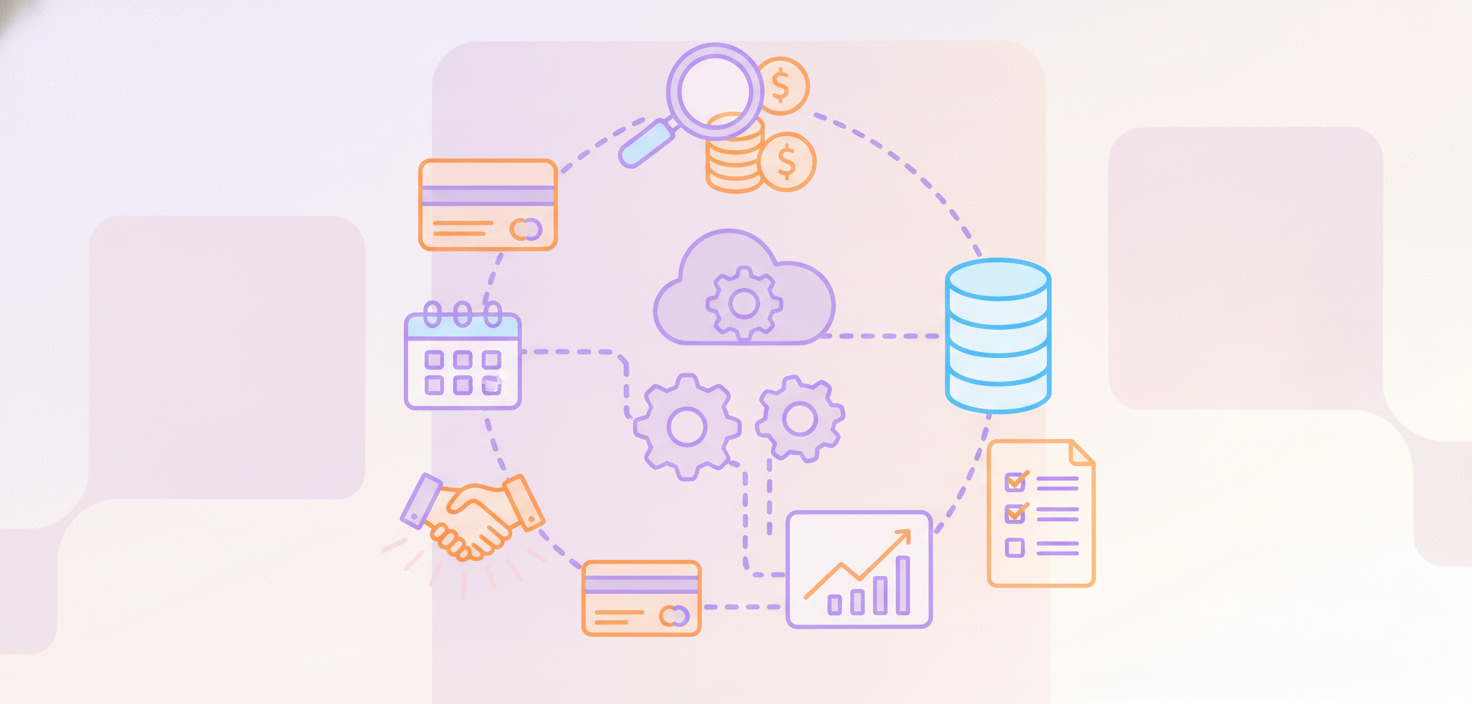財務管理に影響を与えることができます。
SaaS FinOpsとは?

SaaS FinOpsとは?
SaaS FinOps(財務運用)とは、SaaSアプリケーションのコスト、利用状況、価値を最適化するために財務管理手法を適用する実践と定義されます。
これは、財務、IT、ビジネスの各部門間の協力と連携を反映したもので、SaaSサブスクリプションへの洞察を得て、支出を管理し、正確性を確保し、SaaSの利用状況をビジネス目標に合わせることを目的としています。
SaaS FinOpsの主な目的は以下の通りです。
- クラウドへの投資から得られる価値を高めること
- 予期せぬ費用を避ける
- 個々の活動が組織のクラウド支出にどう影響するかについての理解を深める
SaaS FinOpsは、クラウド資源の効果的かつ簡潔な利用に関連し、これはコスト削減が唯一の目的でない場合でも、リソースの活用と成長に影響を与える可能性があります
SaaS FinOpsの基本原則は何ですか?
SaaS FinOpsの基本的な概念は以下の通りです:
- コラボレーション
- オーナーシップ
- 一元的な財務リーダーシップ
- 即時報告
- ビジネス主導の意思決定
- クラウドの変動コストモデル
これらの概念は、SaaS運用に必要な責任と透明性の文化を構築するために不可欠です。
これらの概念を適用することで、組織はSaaS費用をより広範な財務方針やビジネス目標と整合させることができます。
これらの概念は、変化する状況、およびクラウドアプリケーションとテクノロジー費用管理の導入に合わせて更新される必要があります。
SaaS FinOpsにおける主要ステークホルダーは誰ですか?
SaaS財務の利害関係者には以下が含まれます:
- CFO:CEOと投資家に将来の成長を伝える上で中心的な役割を果たす
- CIO(最高情報責任者):戦略的なテクノロジー目標の設定を担当する
- 財務・経理部門
- 調達・ソーシング部門
- 投資家
- 部門長 財務データと主要業績評価指標(KPI)を扱う人々
SaaS FinOpsのベストプラクティスは何ですか?
考慮すべきSaaS FinOpsのベストプラクティスをいくつかご紹介します。
- SaaS管理の実践を、より広範なFinOpsフレームワークと統合し、クラウド財務管理に対する統一されたアプローチを確立します。
- クラウドおよびSaaSのコストの可視化に注力し、SaaS企業にとって不可欠なMRR、ARR、チャーンなどの主要なコスト指標を追跡します。
- ショーバックおよびチャージバックのプロセスを導入してコストを効果的に配分し、支出がビジネス目標と一致していること、およびワークロードの最適化と無駄の削減が優先されていることを確実にします。
財務、エンジニアリング、運用チーム間の連携を確保し、クラウドコストのオーナーシップを育み、説明責任を確立する。これは、 Finout、クラウド支出を最適化するための鍵です。
SaaS FinOpsではどのような主要指標が使用されますか?
SaaS FinOpsモデルにおける主要な指標は次のとおりです。
- 月間経常収益(MRR)
- 年間経常収益(ARR)
- 顧客獲得コスト(CAC)
- 顧客生涯価値 (CLTV)
- 解約率
- 営業効率。これはSaaSマジックナンバーによって測定されることが多いです。
これらの指標は、収益パターン、顧客行動、SaaS組織における成長と収益性に対する全体的な有効性に関する貴重な情報を提供します。
コアとなる SaaS メトリクス, FinOpsでは、稼働時間、容量、インフラストラクチャといったクラウドパフォーマンス指標も考慮し、 ストレステスト、およびレイテンシなどを踏まえ、クラウド資源利用の有効性を高めます。
MRRは持続可能性の重要な指標ですが、この要素にとどまらず、説明責任、事業価値、コスト最適化、そしてこれらの目標達成に用いられるツールを考慮する必要があります。
FinOpsはSaaSの価格設定と利益率にどのように影響しますか?
FinOpsは、サービス提供に関連するコストに関する情報を提供し、価格設定に関するより適切な意思決定を可能にすることで、SaaSの価格設定と利益率に影響を与えます。
これにより、〜の作成が可能になります 価格モデル 発生したコストと比較して、利益率と収益成長に影響を与える可能性のある〜
SaaSをスケールする際に、FinOpsはどのようにコスト予測に役立ちますか?
FinOpsは、SaaSをスケールする際のコスト予測を以下の方法で支援します。
- 予算予測可能性の向上
- シャドーITリスクの軽減
- 財務、IT、およびビジネスリーダー間の連携強化
企業は、過去のデータと利用パターンに基づいて将来の支出を予測するために、予測分析とFinOpsツールを活用でき、これは成長に影響を与える可能性があります。 スケーラビリティ、導入率、そして冗長なソフトウェアの存在に。
SaaS FinOpsの実装における主要な課題は何ですか?
SaaS組織におけるSaaS FinOpsの実装にはいくつかの課題があり、それらには以下が含まれます。
- クラウド支出の可視性の欠如
- 複雑な事柄の理解 課金モデル
- 組織変更への抵抗に対処すること
- クラウドセンターオブエクセレンス(CCoE)を確立し、クラウド管理システム(CMP)を使用することで、これらの問題のほとんどを解決し、協力関係を促進し、効果的な運用基盤を確立するのに役立ちます。
FinOpsユーザーが、機能開発と合わせてエンジニアに費用対効果を考慮させる上で経験する問題、および可視性とポリシー順守を確保するためのFinOpsと調達およびソフトウェア資産管理との統合について監視します。
結論
SaaS FinOpsは、財務管理をITおよび事業運営と連携させることでSaaS投資を最適化するための確立されたプラクティスです。SaaS FinOpsを導入することで、SaaS企業はコストを予測・管理し、財務アカウンタビリティの文化を育むことができます。